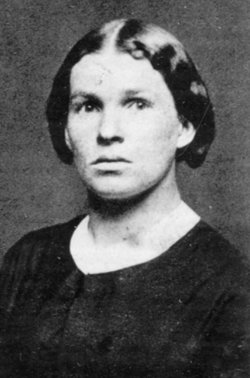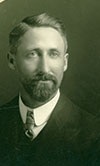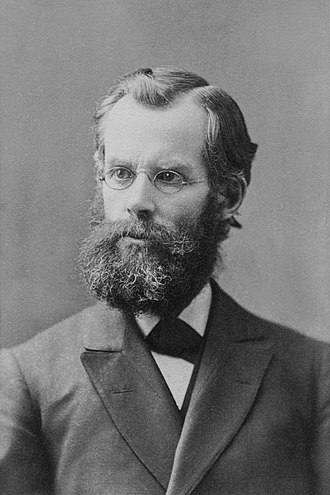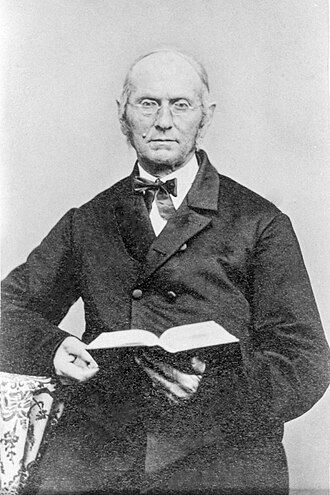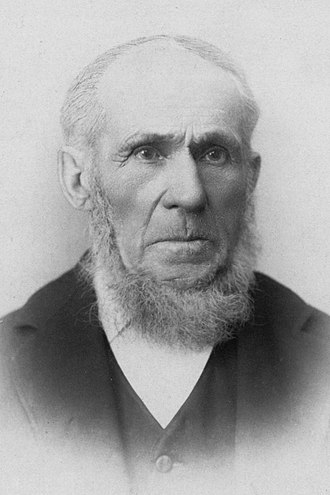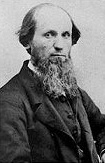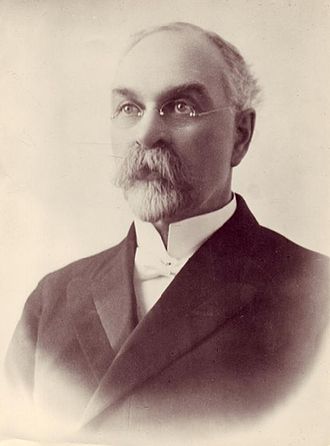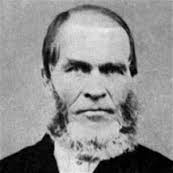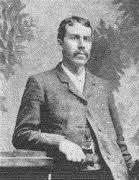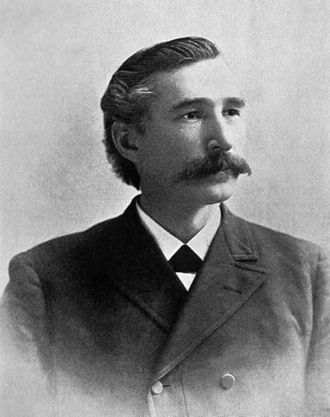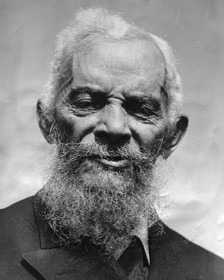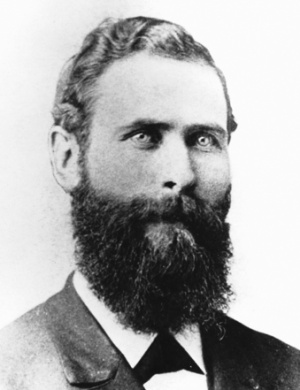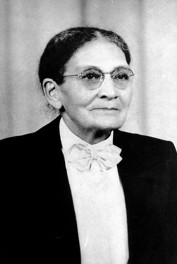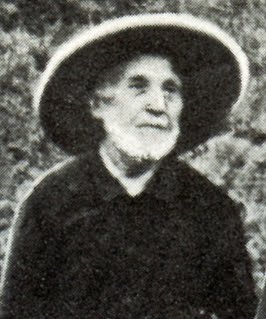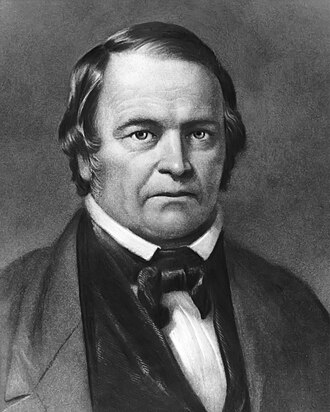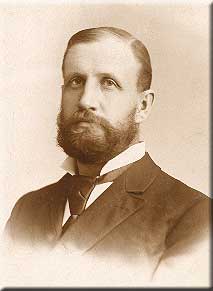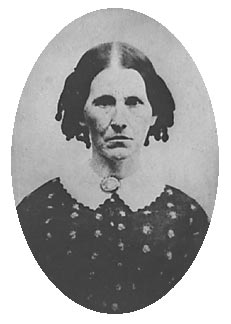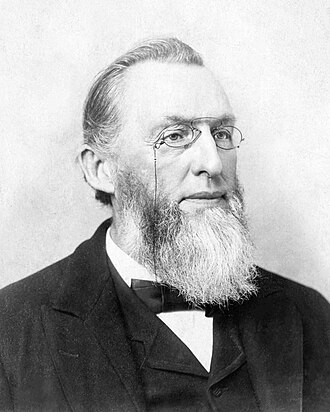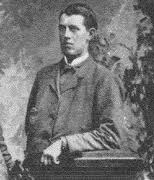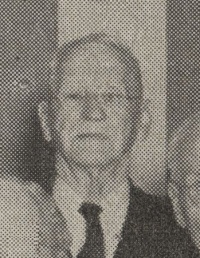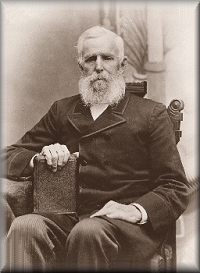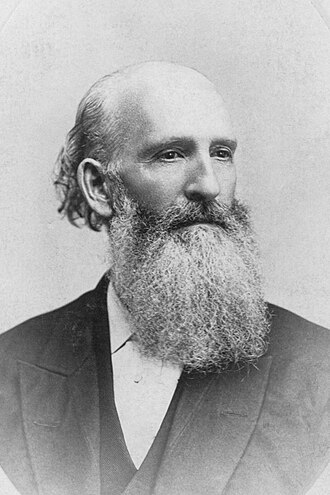AY Honors/Adventist Pioneer Heritage
Overview
The Challenging Part
The most challenging requirement of this honor is probably this:
100.
[[AY Honors/Adventist Pioneer Heritage/Requirements|Tab Name/Printable Version]]
Prologue: Complete a minimum of a 9-week Academy or semester college Adventist History course OR complete the following requirements.
1. Origins:
- a. Read about, watch, or research the origins and development of the Millerite Movement and its role in the beginning of the Seventh-day Adventist Church.
- b. Explain the Great Disappointment based on the prophecy of Daniel 8.
- c. Share your finding with a group.
2. Pioneers:
Be able to identify and explain the significance of at least fifteen (15) of the following individuals:
- a. Martha Amadon
- b. W. H. Anderson
- c. J. N. Andrews
- d. Joseph Bates
- e. John Byington
- f. M. B. Czechowski
- g. A.G. Daniells
- h. Hiram Edson
- i. Harry Fenner
- j. Eduardo Francisco Forga
- k. A.T. Jones / E.J. Waggoner
- l. Charles M. Kinney
- m. George King
- n. Anna Knight
- o. Abram LaRue
- p. Kate Lindsay
- q. William Miller
- r. W.W. Prescott
- s. Rachel Oakes-Preston
- t. Annie Smith
- u. Uriah Smith
- v. Luther Warren
- w. F. H. Westphal
- x. Frederick Wheeler
- y. James White
- z. Any other pioneers of your preference from your own Union/Division.
3. Dates:
Explore and summarize the importance of each of the following event dates to Adventist history:
- a. Great Disappointment (October 22, 1844)
- b. Adventist Church incorporated (May 21, 1863)
- c. Health Reform begins - 1863
- d. J.N. Andrews: First Missionary - 1874
- e. General Conference of 1888 (Righteousness by Faith Conference)
- f. Reorganization of 1901 / Fires in Battle Creek 1902
- g. Gland, Switzerland, 1907
- h. 27 Fundamental Beliefs document adopted 1980
- i. Other significant dates in the history of Adventism in your division, conference, or region
4. Publications:
Describe the origins, publication details, and purpose of each of the following Adventist Publications:
- a. Adventist Review and Sabbath Herald
- b. Advent Tidende
- c. Les Signes des Temps / Signs of the Times
- d. Liberty Magazine / Liberty
- e. Medical Evangelist / Medical Evangelism
- f. Present Truth
- g. Youth’s Instructor
- h. Equivalent publications in your division, conference, or region
5. Church Organization:
- a. Briefly explain the significance of the 1901 General Conference and describe the organizational structure that resulted from it. Indicate how your conference, association, or mission fits into the overall church structure.
- b. Point out on a map where the church offices are located from your conference level to the General Conference.
- c. Illustrate the organizational structure of the Seventh-day Adventist Church and prepare an ecclesiastical organization chart to demonstrate your learning.
6. Miscellaneous:
Tell the importance of at least ten (10) of the following locations, organizations, or concepts or their equivalent.
- a. Avondale College
- b. Battle Creek Sanitarium
- c. Dime Tabernacle
- d. Norsk Bokforlag
- e. Pitcairn Missionary Ship
- f. Sabbath Conferences
- g. Sanitarium Health Food Co.
- h. Solusi College
- i. Systematic Benevolence
- j. Tract Society
- k. Universidad de Montemorelos
- l. Voice of Prophecy
- m. Washington hand press
- n. Other significant locations, organizations, or concepts in your division, conference, or region
7. Read about, watch, or research the story of Ellen G. White. Explain what her role was in the beginnings of the Adventist Church. Include in your research significant factors such as:
- a. First vision (December 1844)
- b. “Elmshaven”
- c. Visions
- d. Gorham, Maine
- e. Lord’s Messenger
- f. “Conflict of the Ages” series
- g. Ellen G. White Estate, Inc.
- h. Lovett’s Grove, Ohio
- i. “Sunnyside”
- j. Testimonies for the Church
8. Discovery of Heritage Stories:
- a. Discover how the Adventist movement started in your country. Give special attention to the things the pioneers did in the process within your country or region.
- b. Discover some of the stories of how Pathfinders, Adventist Youth Groups, or AY Societies began in your conference or division.
- c. Present your finding to a group or as part of requirement 9 or 10.
9. Know and tell for school, Sabbath School, or Pathfinder worship three stories about Adventist history. At least one story must be about an Adventist youth.
10. As an individual or with a group complete one of the following:
- a. Create and present a detailed poster or multimedia display (video/presentation) covering a portion of Adventist Heritage that you have learned.
- b. Write and perform a skit that tells part of the Adventist Heritage story. Present it to younger Pathfinders, Adventurers or other younger group of individuals.
- c. Create a completely playable game about Adventist Heritage. Demonstrate the game to your instructor or a group.
- d. Visit an official Adventist Heritage site within your conference, union, or division and go on a tour. Debrief your experience with a group. If feasible, create a multimedia report of your experience.
Printable Answer Key Tab Name/Edit Answer Key
*
1
1a
1b
1c
2
Be able to identify and explain the significance of at least fifteen (15) of the following individuals:
2a
Martha Amadon (1843-1937) was the eldest daughter of John Byington, the first teacher of the first school organized for Seventh-day Adventist Children. She married George W. Amadon in 1860. She became the first Dorcas Society (Adventist Community Service) president in October, 1874.
2b
William H. Anderson (1870-1950) was a pioneer missionary to Africa from 1895-1944. "Harry," as he was affectionately known to his friends, graduated in 1895 from Battle Creek College, where he was converted. Anderson’s book, On The Trail of Livingston (1919) did much to stimulate interest in African Missions where he served for 50 years.
2c
John Nevins Andrews (1829-1883) was the first official Seventh-day Adventist missionary outside of North America. He and his children Charles and Mary sailed on September 15, 1874 to Switzerland. His wife had died 18 March 1872. As a theologian, Andrews made significant contributions to the development of various doctrines of the Seventh-day Adventist denomination. He wrote extensively on the Seventh-day Sabbath.
Andrews University, named for J. N. Andrews, is an institution operated jointly by the General Conference and the Lake Union Conference. It was the first university to be organized by the Seventh-day Adventist church. It is located in Berrien Springs, Michigan. Its predecessor known as Battle Creek College, was founded in 1874, and grew from a “select” private school established in 1868 by G. H. Bell.
2d
Joseph Bates (1792-1872) a former sea captain and a reformer, was one of the founders of the SDA Church. Bates experienced the disappointment of 1844 without losing faith. He wrote about the 7th Day Sabbath and the 3rd Angel's message. He played a prominent part in the "Sabbath Conferences." He was an evangelist, a leader, and an example in healthful living.
2e
John Byington (1798-1887) was a pioneer minister and first president of the General Conference of the Seventh-day Adventist denomination. He was active in the antislavery movement and maintained a station of the Underground Railroad at Buck’s Bridge, New York, where he lived on a farm.
2f
Michael Belina Czechowski (1818-1876) was a former Catholic priest. He joined the Advent Church in 1857 and in 1864 became a self-supporting missionary to Italy and Switzerland and established the first SDA church in Europe.
2g
2h
Hiram Edson (1806-1882) was a layman, later ordained, of Port Gibson, New York. He was the pioneer responsible for introducing, among those who became Seventh-day Adventists, the fuller understanding of the sanctuary and its cleansing. Edson was not only a thoughtful Bible student and an earnest evangelistic helper, but also a self-sacrificing contributor, putting his possessions into building of the church he loved. Consider visiting Hiram Edson's farm in upstate New York. &
2i
Harry Fenner was only 17 years old when he and his 14 year old friend, Luther Warren decided the church needed an organization to encourage and support the youth. They called their new group a “young people’s society.” Within ten years the church structure was beginning to follow their lead. In 1889 the Ohio Conference became the first to form a conference-wide youth organization. It was known as Christian Volunteers. And in 1907 the General Conference Youth Department was formally organized.
2j
Before he was converted to Adventism, Eduardo F. Forga, a wealthy young Peruvian, founded the first evangelical church in Arequipa, Peru. A health and temperance reformer, a vegetarian, and a defender of religious liberty, he had to flee his native country to England for his outspokenness. There he joined the Seventhday Adventist Church and married Marguerite Lacey, whose sister was married to W. C. White, Ellen White's son. An author in his own right, Mr. Forga translated some of Mrs. White's books and articles into Spanish and had a major impact on the growth of the Adventist Church in Peru, South America.
2k
Ellet J. Waggonner, (1855-1916) was an editor, minister, and physician. He attended Battle Creek College in the earliest years of the institution, and obtained a medical degree from the Bellevue Medical College, New York. He served on the staff of the Battle Creek Sanitarium for a few years. Later he left the practice of medicine and entered the ministry. In 1884 he worked at Pacific Press as assistant editor of the Signs of the Times. Two years later (1886) he and A. T. Jones became editors of the paper. This post Waggoner held until May 1891. He became editor of Present Truth in England in 1892, and in 1902 was elected the first president of the South England Conference. He returned to the United States in the summer of 1902, and served briefly on the staff of Emmanuel Missionary College.
In 1888 Waggoner and A. T. Jones gave a memorable series of sermons on righteousness by faith that stirred the General Conference session in Minneapolis, and for several years afterward were sent by the General Conference Committee to preach on that subject from coast to coast at camp meetings and other large gatherings. Ellen White accompanied them to many of these places until she left for Australia in December 1891.
2l
Charles M. Kinny was born in Richmond, Virginia in 1855, eleven years after the Disappointment of 1844. He was ten years old by the end of the Civil War. It was in Reno, Nevada, in 1878 at the age of 23 that Kinny attended a series of evangelistic sermons by J. N. Loughborough. Ellen White visited during the meetings and spoke to about four hundred listeners on the subject of the “Love of God.” Her message was well received and her presence added much to the interest of the people and “left a favorable impression upon the public mind.” Charles M. Kinny experienced conversion during those meetings. He never forgot Sister White’s sermon and joyfully embraced the love of God and accepted the truth about the Sabbath and the Second Advent. He kept his first Sabbath on the last Saturday of September, 1878, at the age of 23. He was one of the seven charter members and the only Black member of the Reno Seventh-day Adventist church. He was welcomed warmly by the church and was later appointed secretary of their tract society. Charles Kinny would become a prominent figure in early African American Adventism and most of what Adventists learned about the early progress of the work among African Americans they learned from the writings of Charles Kinny. Church leaders looked to him to develop the best methods of evangelism among African Americans. As such Charles M. Kinny was the first African American ordained minister in the Seventh-day Adventist church and is known as the The Father of Black Adventism.
2m
George Albert King (1847-1906) was a pioneer canvasser who developed the idea of subscription sale of Seventh-day Adventist books. A native of Canada, he came to the United States where as a young man he accepted SDA beliefs and desired to be a preacher. Because of a speech impediment he was encouraged to try selling SDA tracts and magazines and books. Throughout his life he was an enthusiastic recruiter and instructor of other canvassers.
2n
Anna Knight (1874-1972) was self-taught until the age of 20 when she attended Mount Vernon Academy in Ohio in 1894. In 1898 she graduated from Battle Creek College as a missionary nurse. She operated a self-supporting school in Jasper County, Mississippi for Black children. In 1901 she was appointed as a missionary to India where she served 6 years. She served in the Educational Department for Southeastern Conference and Southern Conference when they merged, and served until the regional Conferences were formed. She authored the book Mississippi Girl,& the story of her life.
2o
Abram LaRue (1822-1903) was a pioneer, self-supporting lay missionary in eastern Asia. While working as a sheepherder in California he accepted the Seventh-day Adventist faith. Immediately he requested a mission appointment to China. Because of his advanced age the General Conference declined but after attending Healdsburg College one term he worked his way to Honolulu and sold books in the city and on the ships in port. In 1888 at the age of 66, La Rue went to Hong Kong where he worked for 14 years with Europeans and the Chinese. He died in Hong Kong in 1903 where he had been a tireless worker with a rare gift in meeting people and conveying his own religious convictions to them.
2p
Katherine Lindsay (1842-1923) was a physician and founder of the first Seventh-day Adventist nurse’s training school. In 1875 she graduated at the head of her class from the University of Michigan Medical College. She joined the staff of the Battle Creek Sanitarium. Dr. Kate, as she was known, introduced thorough classwork and became known as a foremost teacher of student nurses.
2q
William Miller (1782-1849) was an American farmer and a Baptist preacher who announced the imminent coming of Christ and founded the movement popularly know as Millerism or the Millerite movement. He was a convincing preacher in the logical way he appealed in earnestness. After the “Great Disappointment” he built a chapel on his property so Advent Believers would have a place to worship.
2r
2s
Rachel Oakes-Preston (1809-1868) was a Seventh-day Baptist who persuaded a group of Adventists to accept the Sabbath in Washington, New Hampshire, and thus to become, in that sense, the first Seventh-day Adventists. Due to Rachel's influence, Frederick Wheeler (1811-1910), an ordained minister of the Methodist Episcopal Church, and promoter of the prophetic teachings of William Miller, preached his first sermon on seventh-day Sabbath to his "Christian Brethren" congregation on March 16, 1844.
Further due to Rachel's influence, William Farnsworth (1807-1888), after the Great Disappointment of October 22, 1844, stated publicly to the "Christian Brethren" congregation his conviction that Saturday, being the seventh day of the week, was Sabbath. His brother Cyrus (who became the husband of Rachel’s daughter Delight), and several others, also made their convictions known.
2t
Annie Rebekah Smith (1828-1855) was a poet and editorial assistant. She joined the Baptist Church at the age of 10 and became an Adventist in 1844. She gave up teaching in 1850 because of eye trouble and in 1851 she attended a meeting by Joseph Bates and was convinced of the Seventh-day Adventist faith. She sent a poem, "Fear Not, Little Flock" to the Review and Herald. James White employed her to read proof, edit copy and take charge in White’s absence. She wrote many poems. Ten of her hymns appear in the Church Hymnal. She died of Tuberculosis in 1855.
2u
Uriah Smith (1832-1903) was an editor and author who gave 50 years of service to the Seventh-day Adventist cause. At age 13 his left leg was amputated above the knee due to an infection. In 1863 he patented a improved model artificial leg with fully flexible knee and ankle joints. He became a Sabbath-keeping Adventist in 1852. He wrote poems and articles that were printed in the Review & Herald and in 1853 joined his sister, Annie, as a worker at the office of the Advent Review and Sabbath Herald in Rochester, New York. He was one of the most fluent writers for the young denomination. His pen could be incisive. He is best known for the book Daniel and Revelation. In 1874 he patented a school desk with an improved folding seat. The last words he ever wrote, in 1903, to the General Conference epitomized his lifelong purpose: "I am with you in the endeavor to send forth in this generation this gospel of the kingdom, for a witness to all nations. And when this is completed, it will be the signal for the coronation of our Coming King."
2v
Luther Warren (1864-1940) was a youth leader and evangelist. At the age of 14, in 1879, he with his friend Harry Fenner, organized at Hazelton, Michigan one of the first Seventh-day Adventist young people’s societies. His formal education was limited but he was an insatiable reader, keenly interested in the development of church schools. He began his evangelistic career in 1888 as a tent master in Michigan, a career that took him to many centers throughout North America. He powerfully influenced thousands of young people in schools and churches where he conducted revivals. Mary Boucher has written a biography on Warren under the title Luther Warren (Review and Herald, 1959). See the history given here.
2w
Frank Henry Westphal (1858-1944) was a pioneer missionary to South America. He was converted to the Seventh-day Adventist faith at the age of 19 and in 1878 he was made leader of the newly organized church in New London, Wisconsin. In 1894 he was called to South America and became the first ordained SDA minister assigned to the South America Continent. He worked with success in Argentina, Uruguay, and Brazil and Chili.
2x
Frederick Wheeler (1811-1910) was a pioneer Adventist minister, reputed to be the first ordained Adventist minister to preach in favor of the seventh-day Sabbath. In 1840 he was an ordained minister of the Methodist Episcopal Church and became its circuit rider in the vicinity of Washington and Hillsboro in New Hampshire. In 1842 he became acquainted with the Millerite views and was active in the propagation of the Adventist views. In March of 1844, after a discussion with Rachel Oakes (later Preston), he became convinced through study that the seventh-day Sabbath was sacred. He preached and farmed in the neighborhood until James White invited him to go farther afield with his ministry.
2y
James Springer White (1821-1881), a co-founder of the Seventh-day Adventist Church, was the fifth of nine children. He was baptized, at age 15, in the denomination called Christian Connection to which his parents belonged. After teaching for two winters he heard of the Millerite Movement and was persuaded to attend a meeting. He became convinced of the importance of what he had heard and of the shortness of time. He resigned from his school to join in heralding the Advent message. He suffered keenly during the Great Disappointment in October 1844, but he clung in confidence to God’s Word. He married Ellen Gould Harmon on August 30, 1846 and soon after, the two of them began to keep the seventh-day Sabbath. He wrote encouragement to the believers and worked to spread the gospel of Jesus' soon coming until his death in 1881.
Ellen G. White, (1827-1915) was co-founder of the Seventh-day Adventist Church, together with James White and Joseph Bates. She was a writer, lecturer, and counselor to the church, who possessed what Seventh-day Adventists have accepted as the prophetic gift described in the Bible; also known as the Spirit of prophecy. In her early teens Ellen and her family were faithful Methodists in Portland, Maine, and accepted William Miller’s view on the second advent of Christ about the year 1843, after hearing his lecture in March 1840. She was baptized into the Methodist Church in June 26, 1842. In September 1843, because of their Adventist views, she and her parents and other members of the family were disfellowshipped from the Methodist Church. Expecting Christ’s return in October 22, 1844, she and her family experienced the Millerites’ great disappointment. At the age of 17, in December 1844, Ellen Harmon joined four other women in family worship, and while they were praying, she experienced her first vision, in which she witnessed a representation of the travels of the Adventist people to the City of God. It was one of many visions she received during her lifelong ministry. Ellen White died on July 16, 1915, at the ripe age of 87 years.
2z
3
Explore and summarize the importance of each of the following event dates to Adventist history:
3a
The day of the Great Disappointment was when Jesus did not come as those awaiting His Advent had calculated and waited for with much prayer.
3b
The Adventist Church incorporated on May 21, 1863. This is considered the date of the official organization of the Seventh-day Adventist Church. This move was significant since it gave the church the right to own property and ordain ministers. Many of the founders had to “grow” significantly in order to “organize” since many had come from backgrounds that felt that organizing was not consistent with scripture.
3c
3d
3e
Held in Minneapolis, Minnesota October of 1888 this conference was notable as E. J. Waggoner and A. T. Jones presented the concept of Righteousness by Faith in Jesus Christ. Ellen White joined the two men in their presentations.
Many of the General Conference leaders held that works-based righteousness was the key to salvation in Jesus. The arguments and exchanges were heated and lengthy. Eventually, God-led individuals voted in favor of the church operating under a premise of righteousness by faith, but this "win" would not come easy. E.J. Waggoner, A.T. Jones both eventually left Adventism, and Ellen White was "sent" to Australia.
3f
These events decentralized the very centralized administration of the General Conference at the time.
A.G. Daniels helped lead a charge to create UNIONS in 1901, thus allowing many decisions that primarily affected one local field to be made by leaders within the field. This left global decisions to the General Conference, and even eventually led to a delegate-based approach to decision making on such issues as the Fundamental beliefs that define Adventism (3 h.)
Ellen White had warned that there needed to be more people involved in the process of decision making AND that having all the major "arms" of the church work all in one city was not the "salt and light" God intended. The Battle Creek Sanitarium (medical) burned February 18 and Review and Herald (publishing) burned December 30, both in the same year - 1902. (article http://archives.adventistreview.org/2004-1513/story1.html)
All of these events helped decentralize the power and influence of the administration of the Adventist work. Currently, there are over 100 medical facilities operated by the Adventist Church and more than 70 publishing houses worldwide (http://www.adventistdirectory.org/ViewAdmFieldSubEntities.aspx?EntityType=P&AdmFieldID=GC)
3g
Gland, Switzerland was the site of the General Conference Session where the Young People’s Department of Missionary Volunteers was officially adopted. This later became the Pathfinders.
3h
Fundamental Principles of Adventist belief had been published as early as 1872 (by James White) and supported by the General Conference as early as 1889. However, the formal statement of Fundamental Beliefs published in 1980 as voted in General Conference session was a significant step in formalizing what beliefs set apart Seventh-day Adventists as a distinctive branch of Christianity AND also demonstrates the Christ-centric nature of the Adventist church. In 2005, a 28th belief (inserted as #11) was added.
3i
4
Describe the origins, publication details, and purpose of each of the following Adventist Publications:
Many historical publications can be accessed on the Office of Archives, Statistics, and Research website[1], or their history explored in the online version of the Encyclopedia of Seventh-day Adventists [2].
4a
The Adventist Review was founded by James and Ellen White in July 1849 as The Present Truth, but the name was changed to The Advent Review and then Second Advent Review and Sabbath Herald (with variations) after being combined with the Advent Herald publication. The name was changed to Adventist Review in 1978. Throughout its history it has been commonly referred to as the Review. Read more about publication details on their website (https://www.adventistreview.org/).
4b
Advent Tidende was a Danish monthly paper which John G. Matteson, a native son of Denmark, started for the Scandinavian people in the United States, Denmark, and Norway.
4c
French Signs of the Times magazine
4d
Liberty was first called American Sentinel (1886-1900) and then Sentinel of Liberty (1900-1903) before being shortened to its current name (1906-Present). Not sure what it was called from 1903-1906, doesn't seem to say.
4e
Published by the College of Evangelists, then the College of Medical Evangelists and finally Loma Linda University. Publication began in June 1908 and continued through June 1962.
4f
Present Truth was an illustrated evangelistic periodical devoted to the presentation of various facets of doctrine. It was begun by James White in July of 1849 and was the forerunner of the Review and Herald.
4g
The Youth's Instructor was the name of the first magazine the Seventh-day Adventists had for youth. It was later renamed Junior Guide and later Guide Magazine which is still in print today.
4h
5
5a
A comprehensive Encyclopedia of Seventh-day Adventists article (https://encyclopedia.adventist.org/article?id=DC19) details the church structure organizational changes made in 1901 and 1903 General Conference sessions, providing comparison to the original model established in 1863.
Ellen White, recently back from Australia, stood up at the 1901 GC Session in Battle Creek and urged that the Administrative structure of the church be modified. The goal was to increase the effectiveness of the church in ministry, move decision making out of the GC office (then in Battle Creek) and closer to the front line.
The most significant action in 1901 was perhaps the organization of Union Conferences. Originally the 'State' conferences had joined together to form the General Conference. While many in leadership came to view Unions as unnecessary overhead by 2000 (a hundred years later), the debate over gender equality in ministry has brought Unions forward again as a primary place where policy and change happens.
The Adventist Church is studying restructuring actively. Economic realities will likely see a reduction of at least one of the levels of church governance. Different people wish to strengthen or weaken the power of the General Conference (and its Divisions) vs the Unions and Local Conferences. Time will tell how the church can best structure to finish the gospel commission.
5b
Generally (there are exceptions) there will be 4 levels of administration serving your local church and its members:
Local Conference or Local Mission. Sometimes for areas with few Adventists this level is called a Field or Section. Increasingly this level is being dispensed with in favor of the Union of Churches model. Conferences usually cover a province or state, or part of or several such political units. Regional Conferences in much of the USA provide support to mainly black churches.
Union or Union Mission or Union of Churches. Increasingly the Union level is termed SDA Church in Place Name. In part of Europe in particular the Union of Churches model is dispensing with the local conference model and simply representing churches in a geographic area. The Union is the building block off the General Conference. There are 124 Unions in the world as of 2014. A few Conferences are not attached to a Union for various reasons (Guam-Micronesia in the NAD is one example).
Divisions of the General Conference are administrative units that group Unions together. There are 13 Divisions and 1 Union (Middle East North Africa Union) that exists outside any Division. Divisions have no independent constituency.
The General Conference is the grouping of all the Unions. New Unions are voted into the worldwide sisterhood of churches at each GC Session (5 years apart).
5c
A helpful resource could be the Church Structure video series developed by The Scratch News and posted on YouTube.
From the North American Division Perspective - your illustration would show the General Conference, then the North American Division (Canada, United States, Bermuda, Guam, Federated States of Micronesia, Marshall Islands, Northern Mariana Islands and Palau). ([3]) Following that is the Union structure. Your illustration would vary based on which Union your Conference and church is located in.
The Unions & Conferences in the NAD are:
[4]
[5]
Atlantic Union - Conferences: Bermuda, Greater New York, New York, Northeastern, Northern New England, and Southern New England Conferences.
Seventh-day Adventist Church in Canada - Conferences: Alberta, British Columbia, Manitoba-Saskatchewan, Maritime, Ontario, and Quebec (French website) Conferences and the Seventh-day Adventist Church in Newfoundland and Labrador.
Columbia Union - Conferences: Allegheny East, Allegheny West, Chesapeake, Mountain View, New Jersey, Ohio, Pennsylvania, and Potomac Conferences.
Guam-Micronesia Mission - Became part of North American Division in February, 2012 Missions do not have conferences.
Lake Union - Conferences: Illinois, Indiana, Lake Region, Michigan, and Wisconsin Conferences.
Mid-America Union - Conferences: Central States, Dakota, Iowa-Missouri, Kansas-Nebraska, Minnesota, and Rocky Mountain Conferences.
North Pacific Union - Conferences: Alaska, Idaho, Montana, Oregon, Upper Columbia, and Washington Conferences.
Pacific Union - Conferences: Arizona, Central California, Hawaii, Nevada-Utah, Northern California, Southeastern California, and Southern California Conferences.
Southern Union - Conferences: Carolina, Florida, Georgia-Cumberland, Gulf States, Kentucky-Tennessee, South Atlantic, South Central, and Southeastern Conferences.
Southwestern Union - Conferences: Arkansas-Louisiana, Oklahoma, Southwest Region, Texas, and Texico Conferences.
6
Tell the importance of at least ten (10) of the following locations, organizations, or concepts or their equivalent.
6a
Avondale University College is an Australian tertiary education provider affiliated with the Seventh-day Adventist Church. It is a part of the Seventh-day Adventist education system, the world's second largest Christian school system. Avondale University College has two campuses, the Lake Macquarie campus being the primary campus situated in Cooranbong, New South Wales. The other campus is located at Sydney Adventist Hospital in the Sydney suburb of Wahroonga and is the main campus of the nursing school.
Avondale University College primarily focuses in the areas of teaching, theology, and nursing, but also offers bachelor's degrees in business, science and the arts as well as certificate studies in outdoor recreation. The nursing programme commences at the Cooranbong campus for one or two semesters and is completed at the Sydney Adventist Hospital with hands-on experience gained in the hospital. Master's degrees are offered in theology, education, nursing, ministry, and some business related fields by distance education, including a one-month on-campus component in the winter semester.
6b
The Battle Creek Sanitarium was opened in 1866 as the Western Health Reform Institute in Battle Creek, Michigan. It was a pioneer Seventh-day Adventist Medical institution. A brief article on the Adventist Heritage site gives details on how they funded the project originally as a stock company, and the leaders up through the time when the newly educated Dr. John Harvey Kellogg took over to place the treatment principles given through inspiration on a scientific foundation that was disseminated to other doctors and the patients. The Battle Creek Sanitarium was a leading treatment institution for many years. While the original facility burned down, and the sanitarium built to replace it ended operation in 1957, the model deployed there was copied many times over in various locations throughout the United States and the world.
6c
Dime Tabernacle was the name for the church built in Battle Creek and paid for from dimes that were saved and turned in for the church building. It was destroyed by fire on January 3, 1922.
6d
Norsk Bokforlag was a Norwegian Publishing House established in 1932.
6e
The Pitcairn was a vessel built as a schooner, refitted as a brigantine, and used by Seventh-day Adventists for transporting missionaries across the Pacific Ocean from 1890 to 1900. The ship was paid for by Sabbath School Offerings and made six missionary voyages whose missionaries established missions in many of the islands of the South Pacific. The first voyage went directly to Pitcairn Island arriving there November 25, 1890. Pitcairn was a remote British island possession in the southeastern Pacific Ocean about 3,500 miles north-east of New Zealand. Because maintenance of the ship was expensive, The Pitcairn was sold in 1900, by which time steamship connections with the islands had improved.
A game bearing the name of the ship has been created for individuals to earn the God's Messenger Honor, accessible on the web or as an app at [6].
6f
The Sabbath Conferences were a series of meetings of “friends of the Sabbath” held in various places in New England and New York. Beginning in April of 1848, during the formative period when James and Ellen White, Joseph Bates, and others began the work of "uniting the brethren on the great truths connected with the message of the third angel."
6g
The Sanitarium Health & Wellbeing Company is a chain of health food factories, wholesale branches, and retail shops in Australia and New Zealand, operated by the Health Food Department of the South Pacific Division of the Adventist Church. Products include Weets-Bix, a flaked-wheat breakfast-food biscuit; cornflakes, and other cereal foods; Marmite, a yeast-extract flavoring; peanut butter, vegetarian meats and textured vegetable protein, and So Good, a nondairy soy milk. It has subsidiaries in Canada and other countries and exports worldwide. Part of the Adventist focus on healthy living. &
6h
First (heathen) Adventist Mission Station 1894.
The General Conference chose Elder W.H. Anderson and two other men to go to the new mission station 1895. They were given $5,000 dollars for one year and were told that was all they had. They were to become self-supporting as soon as possible. They had no expense allowance. They landed at Cape Town and traveled by train to the north to Mafeking. From there they traveled 600 miles using two oxcarts and 36 oxen. They averaged about 15 miles a day and the river beds were dry. They learned later that in the dry season the water was under the river bed and not in sight. When the monsoon season comes the river beds are full.
At first the church services were held under the trees. On their first first Sabbath there, the Chief Solusi came with many of his people.
Solusi College is an institution of higher learning now operated by the Zimbabwe Union Conference. It was established in 1894 as Solusi Mission and is headquartered in Bulilimamangwe, Zimbabwe. An interesting brief history.
6i
Systematic Benevolence was a system by which the first Adventist pastors were paid. Contributions were "systematic" meaning they were determined by one's wealth and were regularly made. Before this plan the preachers of the Seventh-day Adventist doctrines were largely self-supporting.
6j
The Tract Society began in 1869 with a group of ladies at South Lancaster, Massachusetts. The society members visited the sick and needy and distributed tracts and wrote letters sharing their faith. In 1870 S. N. Haskell organized the first Conference-wide society in New England. By 1924 their scope of influence having long since reached beyond the small literature state, the name was changed to Book and Bible Houses. In 1972 the name Adventist Book Center (ABC) was adopted. The ABC is a distribution and service outlet for the Seventh-day Adventist publishing house products and other church-approved materials.
6k
Universidad de Montemorelos is a coeducational institution of higher learning established in 1942 as the Escuela Agrícola Industrial Mexicana near the city of Montemorelos, in the northeastern State of Nuevo León, México. The school began to offer medical degrees and merged with its hospital that served the community. In 1973, the college became the Universidad de Montemorelos, and they are still actively in operation. Visit their site. A short YouTube clip from the Adventist News Network "This Week in Adventist History" segment gives an overview of their history, including multiple visits by Mexican presidents.
6l
The radio broadcast founded by H. M. S. Richards. See H. M. S. Richards, Near to the Heart of God|[7]] by Robert E. Edwards Review & Herald, 1998 for a great read.
6m
The Washington hand press (a brand or style of hand operated printing press) was purchased by James White with money from Hiram Edson in 1852, the first press purchased to print SDA materials&. Prior to that, all printed materials were printed by commercial print shops. From that small beginning in a rented house in Rochester, New York, the church established a worldwide network of publishing houses printing in numerous languages.
6n
7
7a
| Note: The editors of this answer book feel that there is an error in the official version of this requirement. More Information Ellen's first vision was in December of 1844, on the subject of the believers journey to heaven. |
Ellen's first vision on the health message took place on June 6, 1863. The subject of Health Reform was new to Ellen at the time, but it became a defining lifestyle for her with time.
7b
Ellen White’s home in St. Helena, California in the Napa Valley. It can be toured for free in person or online. http://www.elmshaven.org/
7c
Messages from God that Ellen was to share.
7d
Ellen's birthplace &.
7e
The name that Ellen White gave herself.
7f
A series of five books that E. G. White wrote which helped people to understand the Bible. The five books are: The Great Controversy, Patriarchs and Prophets, The Desire of Ages, The Acts of the Apostles, and Prophets and Kings &
7g
In her will, Ellen G. White left her literary estate to a board of five church leaders so that her papers and books would be preserved. This corporation was organized after her death in 1915. It is now headquartered in the basement of the General Conference building, Silver Spring, Maryland, where free tours are offered.
7h
Two hour Vision on events in the great conflict between the forces of righteousness and the forces of evil which she was instructed to write out. Later it was written in full in a book called The Great Controversy.
7i
The name of Ellen G. White's home in Cooranbong, Australia near Avondale College. Photo &
7j
A collection of writings that Ellen authored giving instruction, reproof and guidance for church members and leaders. The Testimonies series was released and published over time, eventually taking the 9 volume set we use today. While the individual letters were addressed to specific people, the principals outlined have broad application in the church. Ellen White recognized this and arranged for their wider publication.
8
8a
The Your Story Hour series on Adventist Pioneers, called Pathways of the Pioneers, tells of Adventist beginnings mainly in the USA, but some other countries as well. The series is available in MP3 format on the White Estate website for free online listening.
8b
8c
9
10
10a
10b
10c
10d
References
- ↑ http://www.adventistheritage.org/article/27/historic-sites/edson-farm
- ↑ http://www.amazon.com/gp/product/B0006ATC4O/ref=as_li_ss_tl?ie=UTF8&camp=1789&creative=390957&creativeASIN=B0006ATC4O&linkCode=as2&tag=wwwjadedragon-20
- ↑ http://www.sanitarium.co.nz/about-us/our-history
- ↑ http://news.adventist.org/all-news/news/go/2013-04-10/publishing-work-was-central-to-early-adventist-church/
- ↑ https://en.wikipedia.org/wiki/Gorham,_Maine
- ↑ http://www.ellenwhite.info/books/books-by-egw-coa.htm
- ↑ http://nas.egwwritings.org/galleries/Institutions/637.3b.1.jpg.php
Content on this wiki is generated by people like you, and no one has created a lesson plan for this honor yet. You could do that and make the world a better place.
See AY Honors/Model Lesson Plan if you need ideas for creating one.
